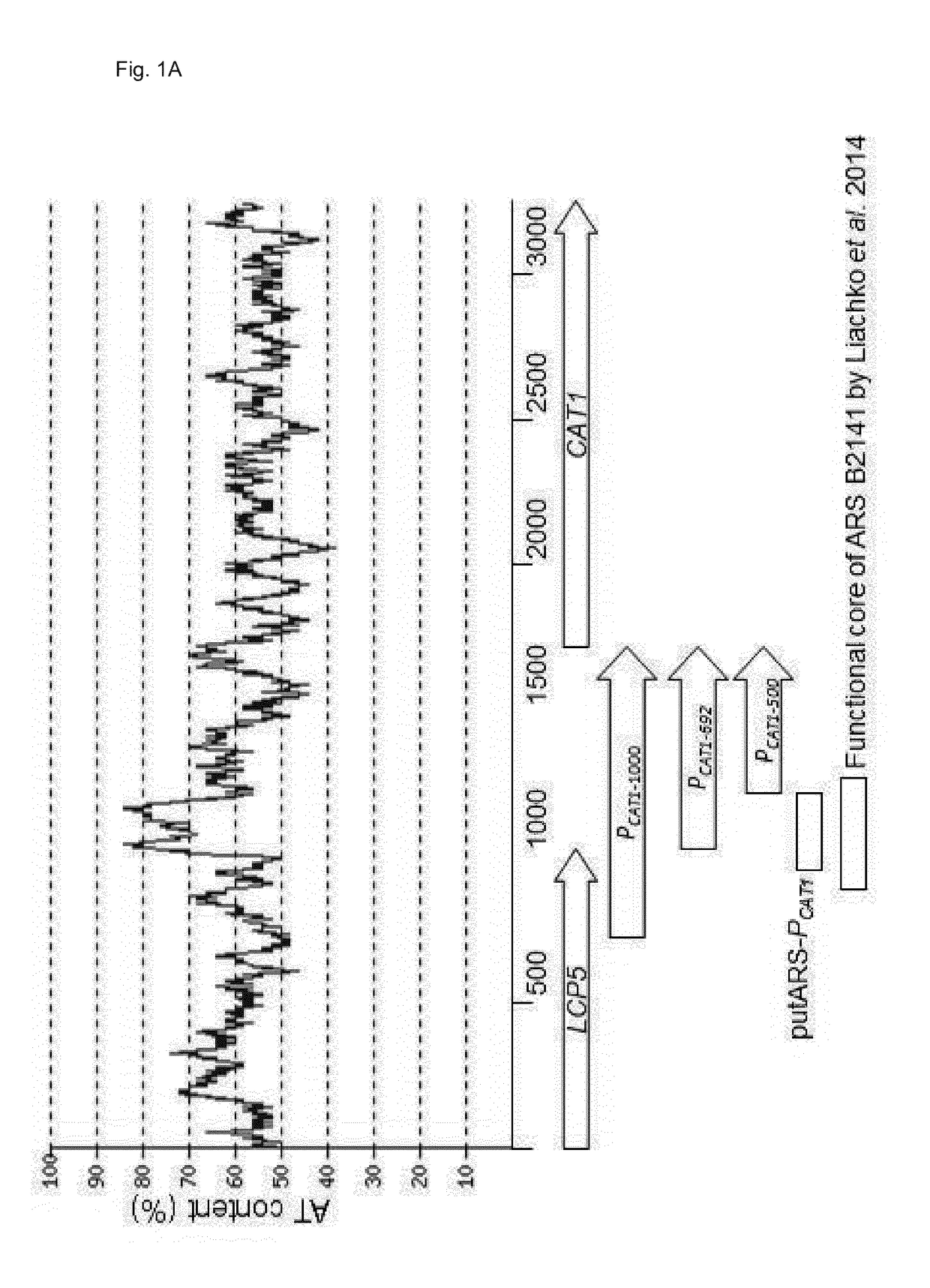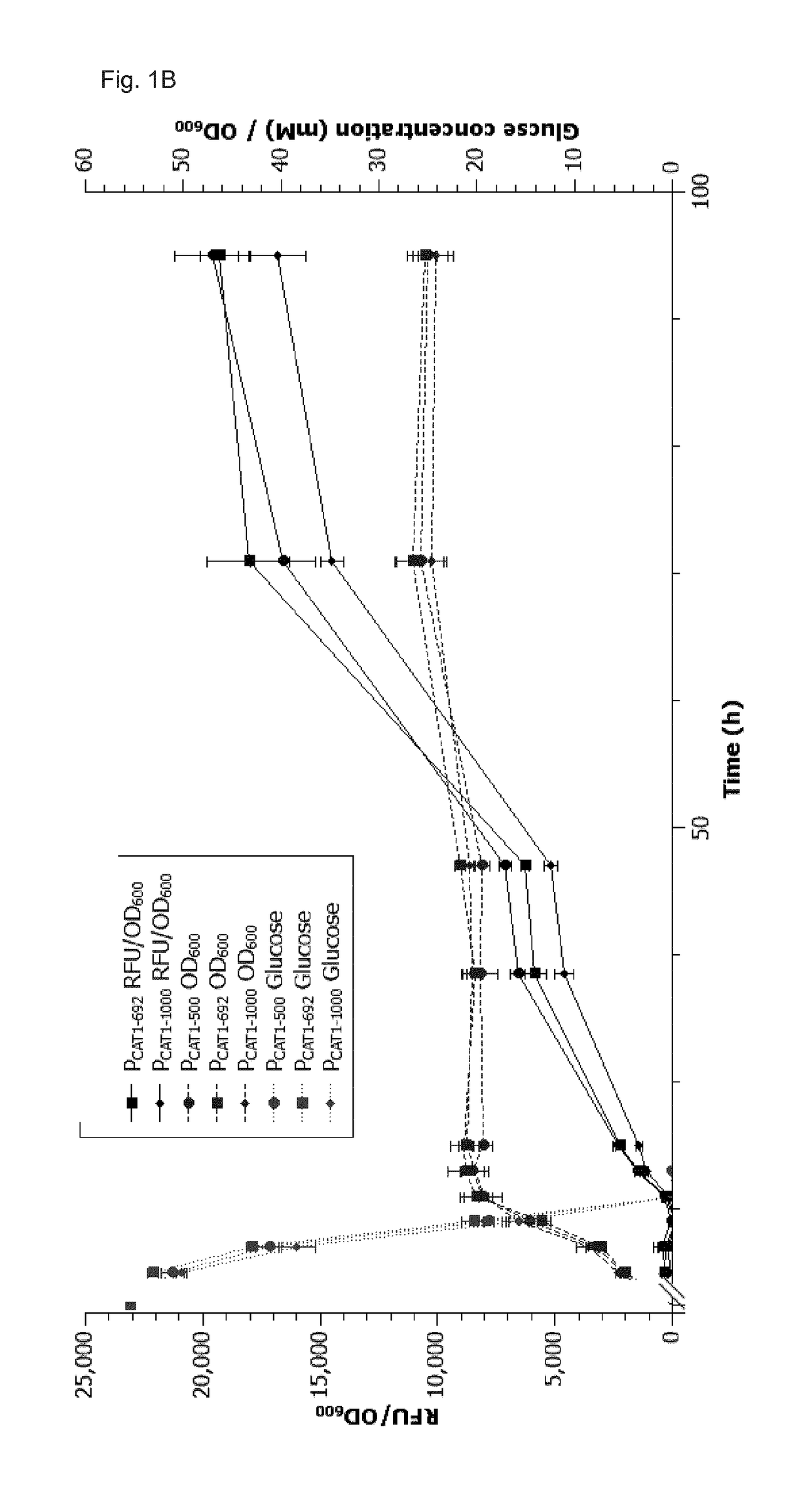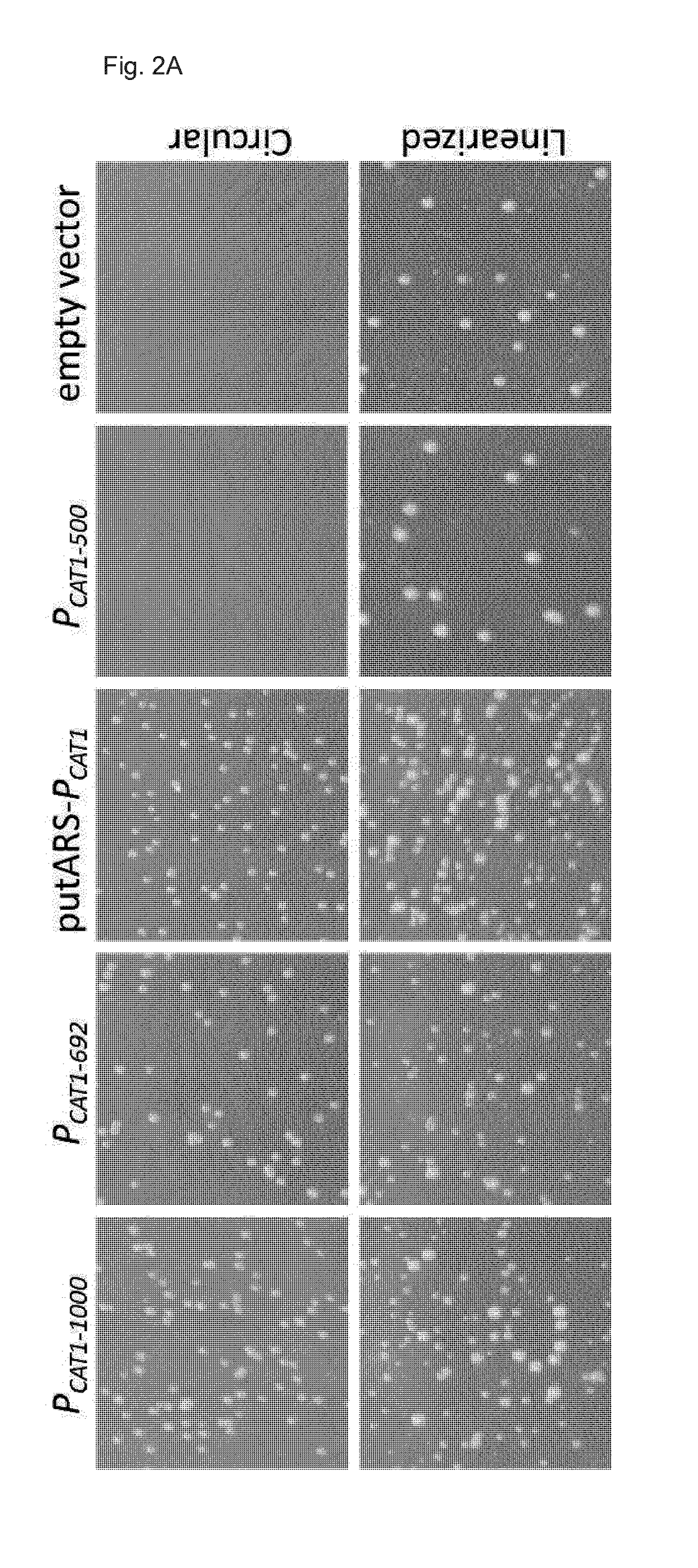Novel episomal plasmid vectors
a plasmid vector and episomal technology, applied in the field of episomal plasmid vectors, can solve the problems of undesirable use of methanol especially in large-scale bioreactors, affecting the efficiency of plasmid transformation, so as to achieve efficient transformation, increase expression, and improve the effect of transformation ra
- Summary
- Abstract
- Description
- Claims
- Application Information
AI Technical Summary
Benefits of technology
Problems solved by technology
Method used
Image
Examples
example 5
ession Levels can be Obtained with the New ARS and Truncated Variants Thereof
[0234]The different ARSs (Accession: M11199, SEQ ID: NO3, 5, 6, 7, 8, 9, 10, 11 and 12) were cloned into pPpT4mutZeoMlyI-intArg4-EGFP-pCAT1-500, which also served as integrated control, between the transcription terminator of the selection marker and the E. coli origin. The ARSs were PCR amplified using the primers listed in Table 2, and cloned into the PstI linearized vector with Gibson assembly (Gibson et al. 2009). AOD-F6 was amplified using the primers AODTT-PstI-CbAOD1ARS-F3-Gib and pUC Ori-KpnI-CbAOD1ARS-F5-Gib. AOD-Full was amplified using the primers AODTT-PstI-CbAOD1ARS-F1-Gib and pUC Ori-KpnI-CbAOD1ARS-F5-Gib. Afterwards the constructs were sequence verified.
[0235]After transformation of the circular plasmids into P. pastoris BG10 seven individual transformants of each construct were picked for screening. The same transformants were cultivated in YPD and YPD with 50 mg / L Zeocin. After the first sc...
example 6
of Bifunctional Activity of ARS as ARS and Terminator of Transcription
[0238]The best fragment from the C. boidinii PAOD1 (F1), PARS1, CAT1-ARS and the 692 bp long version of the PCAT1 as well as the promoter without the core promoter (SEQ ID NO:13; last 78 bp, beginning with the TATA box were deleted) were tested for their activity as transcription terminators. They were compared to the terminators for the selection marker, which are present in the pPpT4_S and pPpGUT1 vectors, and to the best in house terminators (heterologous and homologous).
[0239]Therefore a terminator reporter plasmid was built based on the pPpT4_S vector (Näätsaari et al. 2012) containing PAOX1 and an eGFP reporter gene (reported in Vogl et al. 2014). The AOX1* terminator present was replaced with a stuffer fragment. Therefore the vector was cut with NotI and BamHI. A THIS sequence from S. cerevisiae already previously used as stuffer (Vogl et al. 2015) was again used as stuffer fragment and amplified using prim...
example 7
ve Transformation Efficiency and Expression Yields for ARS Plasmids
[0242]In order to test the transformation efficiency of our new episomal P. pastoris plasmid where the new heterologous C. boidinii ARS was used as a short DNA element with dual function (ARS and transcription terminator) transformation rates with competent P. pastoris BG10 cells were determined in comparison to a plasmid employing the state of the art ARS1 sequence for autonomous replication.
[0243]The two ARSs were cloned into pPpT4_S containing the CAT1-500 promoter. The AOD terminator was removed by digesting the vector with SapI and KpnI and the two ARSs were cloned seamlessly behind the selection marker with recombination cloning (Gibson et al. 2009) after amplifying them with the primers from Table XY. These primers also add an E. coli transcription terminator.
[0244]The multiple cloning site was removed by digesting the vector with EcoRI and NotI and exchanged by a stuffer fragment (SEQ ID NO:14) containing a p...
PUM
| Property | Measurement | Unit |
|---|---|---|
| cultivation time | aaaaa | aaaaa |
| pH | aaaaa | aaaaa |
| wavelengths | aaaaa | aaaaa |
Abstract
Description
Claims
Application Information
 Login to View More
Login to View More - R&D
- Intellectual Property
- Life Sciences
- Materials
- Tech Scout
- Unparalleled Data Quality
- Higher Quality Content
- 60% Fewer Hallucinations
Browse by: Latest US Patents, China's latest patents, Technical Efficacy Thesaurus, Application Domain, Technology Topic, Popular Technical Reports.
© 2025 PatSnap. All rights reserved.Legal|Privacy policy|Modern Slavery Act Transparency Statement|Sitemap|About US| Contact US: help@patsnap.com



